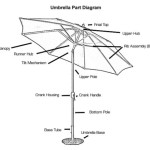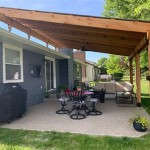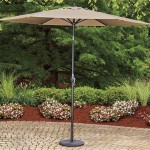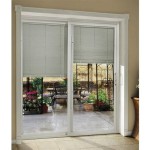How to Create Patio Privacy
Creating a private outdoor space, particularly on a patio, is a common desire for homeowners. A patio offers a space for relaxation, entertainment, and enjoying the outdoors, but its usability is often compromised by a lack of privacy. Whether the issue stems from close proximity to neighbors, street traffic, or simply a desire for seclusion, there are numerous strategies to enhance patio privacy. These strategies range from quick, inexpensive solutions to more permanent and elaborate installations.
The ideal approach depends on several factors, including budget, aesthetic preferences, level of desired privacy, and the physical characteristics of the patio itself. Considerations must also be given to local regulations related to fence heights, property lines, and building codes before undertaking any significant alterations.
1. Implementing Vertical Barriers
Vertical barriers are a primary method for establishing patio privacy. These structures physically block views into and out of the patio space, creating a sense of enclosure and seclusion. The selection of a particular type of vertical barrier should align with the homeowner's style and budget. Several popular options exist:
Fences: Traditional fences are a durable and effective privacy solution. Various materials can be used, including wood, vinyl, composite, and metal. Wood fences offer a natural aesthetic and can be customized with different stains and finishes. Vinyl fences are low-maintenance and resistant to weathering. Composite fences combine the look of wood with the durability of synthetic materials. Metal fences, particularly those constructed from wrought iron or aluminum, offer a more decorative and open appearance while still providing a degree of visual screening.
The height of the fence is a crucial consideration. Taller fences offer more privacy, but they may also create a feeling of enclosure and require compliance with local regulations. Prior to installation, it is imperative to check local ordinances regarding fence height restrictions and property line setbacks.
Screens: Screens offer a more flexible and often less expensive alternative to fences. They can be freestanding or attached to existing structures, providing targeted privacy where needed. Common types of screens include:
Lattice Screens: These screens are constructed from interwoven strips of wood, plastic, or metal, creating a decorative pattern. Lattice screens offer partial privacy, allowing some light and air to pass through. They can be used as standalone dividers or incorporated into larger structures.
Bamboo Screens: Bamboo screens provide a natural and eco-friendly privacy solution. They are typically made from bundled bamboo poles or woven bamboo mats. Bamboo screens offer a rustic aesthetic and can be easily installed and moved.
Fabric Screens: Fabric screens are a versatile and affordable option. They can be made from a variety of materials, including canvas, polyester, and outdoor-rated fabrics. Fabric screens can be hung from existing structures or attached to freestanding frames.
Living Walls: Living walls, also known as vertical gardens, are a visually appealing and environmentally friendly way to create privacy. They consist of plants grown on a vertical structure, creating a lush green barrier. Living walls require a bit more maintenance than other options, including regular watering and fertilization, but they offer the benefits of improved air quality and a unique aesthetic. Proper drainage and irrigation systems are crucial for the success of a living wall.
Pergolas with Drapes or Climbing Plants: Pergolas, with their open framework, provide partial shade and can be enhanced for privacy by adding drapes or planting climbing vines. Drapes made from weather-resistant fabrics can be drawn closed to create a secluded space. Climbing plants, such as ivy, clematis, or wisteria, can be trained to grow over the pergola structure, creating a natural privacy screen over time.
2. Utilizing Plants for Natural Screening
Plants offer a natural and aesthetically pleasing way to enhance patio privacy. Strategic placement of trees, shrubs, and other vegetation can effectively block views and create a sense of seclusion. When selecting plants for privacy screening, it is important to consider their growth rate, mature size, and maintenance requirements.
Trees: Evergreen trees are an excellent choice for year-round privacy. They retain their foliage throughout the year, providing a consistent screen. Popular evergreen trees for privacy include arborvitae, cypress, and juniper. Deciduous trees, which lose their leaves in the fall, can also be used for privacy, but they will only provide screening during the warmer months. When selecting trees, it is important to consider their mature height and spread to ensure they will adequately block views without overwhelming the patio space.
Shrubs: Shrubs are a versatile option for creating privacy hedges. They can be planted in a row to form a dense barrier. Popular shrubs for privacy include boxwood, privet, and viburnum. Similar to trees, it is important to consider the mature size and growth rate of shrubs when selecting them for privacy screening. Regular pruning is necessary to maintain the desired shape and density of the hedge.
Climbing Plants: Climbing plants can be trained to grow on fences, walls, or trellises, creating a living privacy screen. Popular climbing plants for privacy include ivy, clematis, wisteria, and honeysuckle. When selecting climbing plants, it is important to choose varieties that are appropriate for the local climate and soil conditions. Regular pruning is necessary to control the growth and spread of climbing plants.
Tall Grasses: Ornamental grasses can provide a soft and natural privacy screen. They sway in the breeze, adding movement and texture to the landscape. Popular ornamental grasses for privacy include bamboo grass, feather reed grass, and switchgrass. These grasses can grow quite tall, providing a significant degree of visual screening.
Potted Plants: Potted plants offer a flexible and portable privacy solution. They can be easily moved and rearranged to create different configurations. Large potted plants, such as bamboo, evergreens, or tall grasses, can be used to create a privacy screen along the edge of the patio. The use of different sized pots adds visual interest and allows for customization of the privacy level.
3. Incorporating Water Features
While not a direct form of privacy creation, water features can play a significant role in enhancing the overall sense of privacy and tranquility on a patio. The sound of running water can mask unwanted noise from neighbors or street traffic, creating a more peaceful and secluded atmosphere. In essence, a sound barrier often translates to an increase in perceived privacy.
Fountains: Fountains are a classic water feature that can add elegance and sophistication to a patio. They come in a variety of styles, from traditional tiered fountains to modern minimalist designs. The sound of water cascading from a fountain can create a soothing and relaxing ambiance.
Waterfalls: Waterfalls can be incorporated into existing walls or rock formations, creating a natural and visually stunning water feature. The sound of water rushing down a waterfall can effectively mask unwanted noise.
Ponds: Ponds can add a serene and tranquil element to a patio. The presence of water can attract wildlife, such as birds and butterflies, creating a connection with nature. The gentle lapping of water against the edges of the pond can create a relaxing and peaceful atmosphere. Carefully placed plants around the perimeter of the pond can further enhance the sense of privacy.
Bubbling Rocks: Bubbling rocks are a simple and low-maintenance water feature that can add a touch of whimsy to a patio. Water bubbles up from within the rock and trickles down its surface, creating a gentle and soothing sound.
In addition to masking noise, water features can also improve the overall ambiance of the patio, making it a more inviting and relaxing space. This enhanced atmosphere can contribute to a greater sense of privacy and seclusion.
Ultimately, creating patio privacy involves a multifaceted approach. Combining vertical barriers, natural screening, and sound-dampening elements can create a comfortable and secluded outdoor space. The selection of specific strategies should align with the homeowner's budget, aesthetic preferences, and the unique characteristics of the patio environment. Prior to implementing any significant changes, it is crucial to consult local regulations and property line restrictions to ensure compliance.
Careful planning and execution will result in a patio that is both private and aesthetically pleasing, providing a tranquil oasis for relaxation and enjoyment.

11 Backyard Privacy Ideas Extra Space Storage

11 Backyard Privacy Ideas Extra Space Storage

11 Backyard Privacy Ideas Extra Space Storage

45 Inexpensive Backyard Privacy Ideas Hgtv

How To Create Privacy In Your Yard With Plants And Structures

Diy Floating Outdoor Curtain Rod Creating A Privacy Curtains For Deck
:max_bytes(150000):strip_icc()/0L5A8512-72dpi_0-f3b526a00edf4abfba5cd885a7927d96-c20140b33a8246358e8836eb3f4e9d99.jpg?strip=all)
50 Patio Privacy Ideas To Help You Relax In Comfort

21 Patio Privacy Ideas To Make Your Yard More Private

How To Build An Outdoor Privacy Wall The Home

Porch Patio Privacy Fence Ideas Centsational Style








